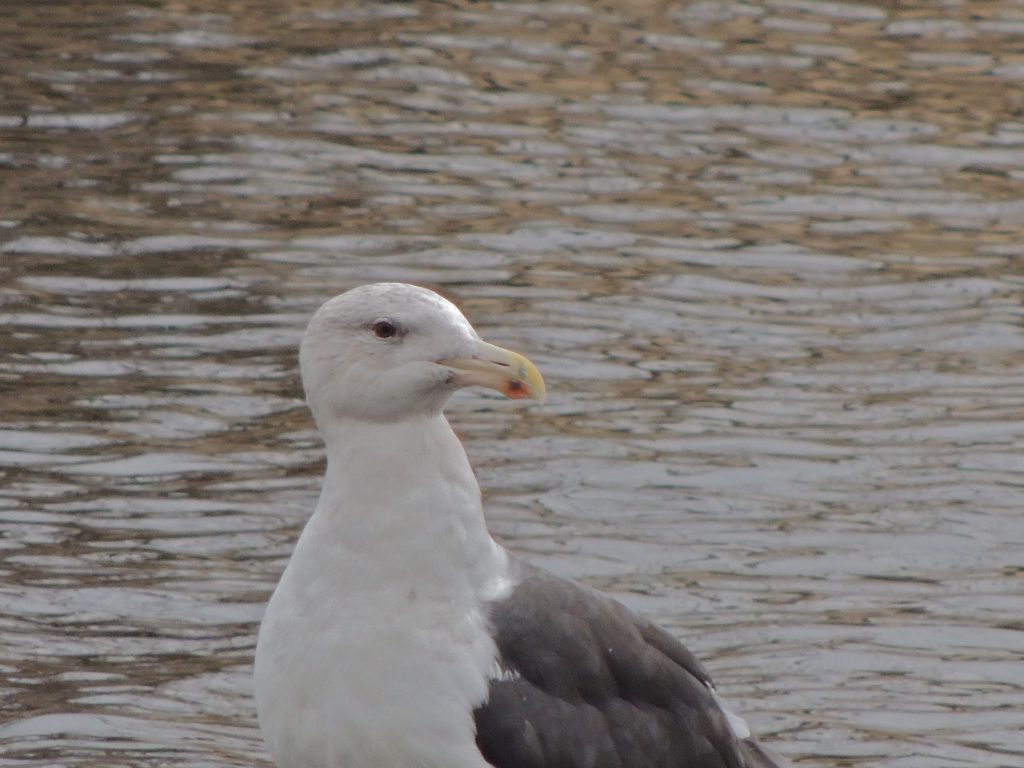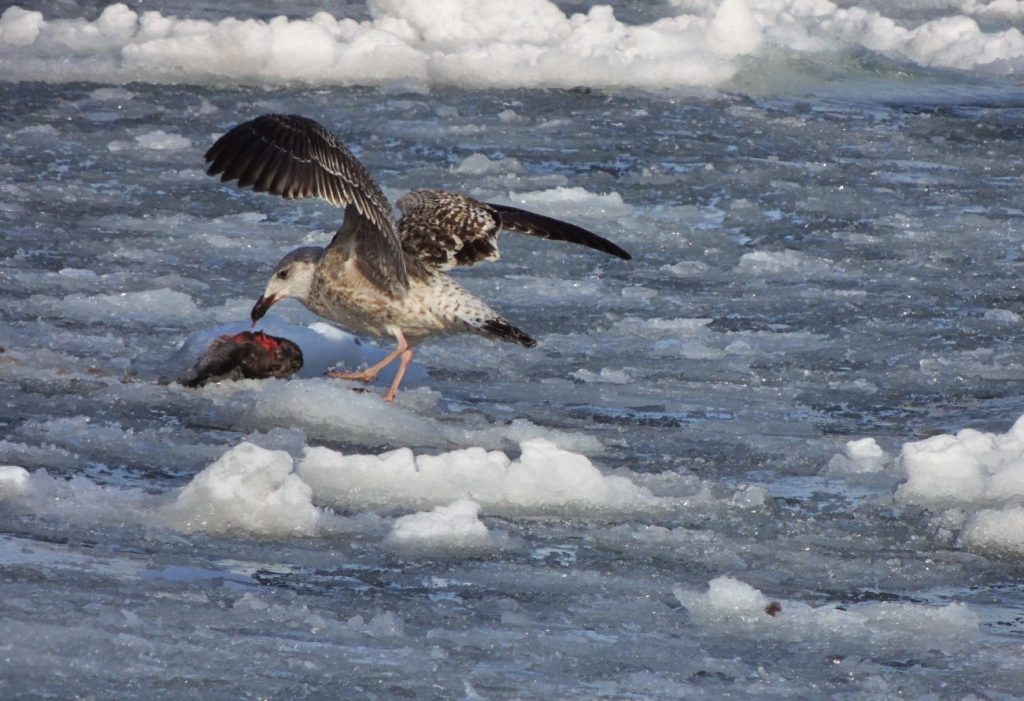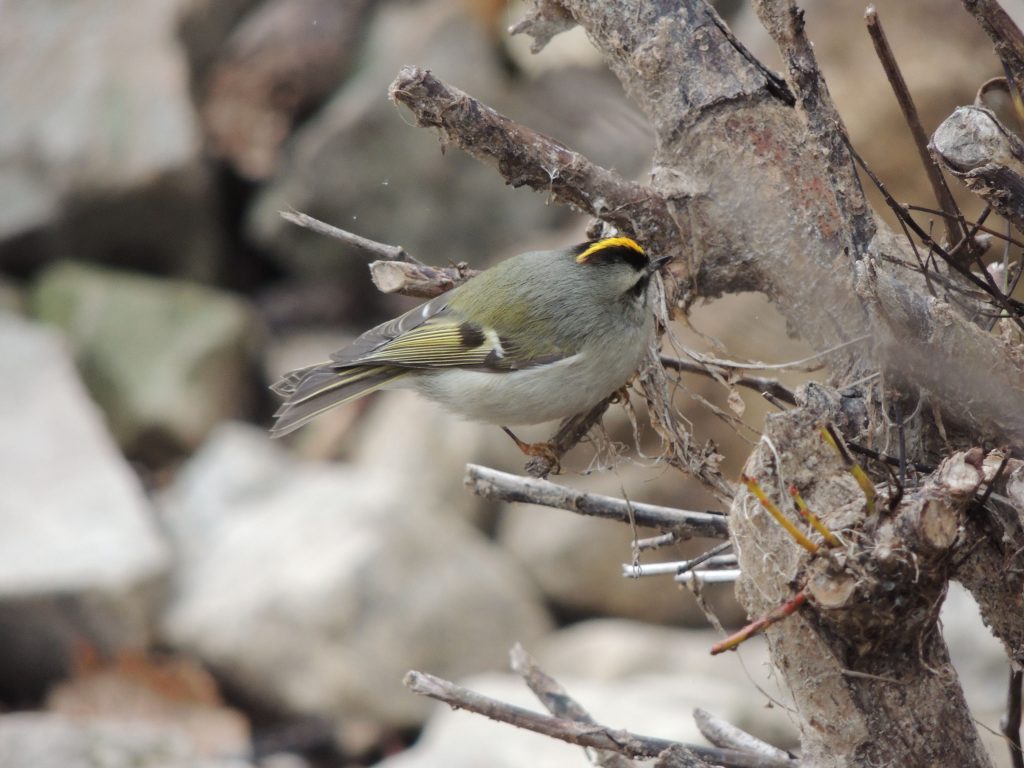October 29th. 2017. LaSalle Park, Burlington, ON. Whenever I keep field notes of birds seen, usually for our transect work, I habitually list the passerines on the left side of the page and non-passerines on the right. (Passerines are often thought of as songbirds, but are officially defined as birds distinguished from other orders of Aves by the arrangement of their toes, three pointing forward and one back, which facilitates perching.) I mention this because almost always, passerine species far outnumber non-passerines; today it was the other way around, literally a sign of the times.
The great autumnal purge of song birds is almost complete and things must be getting hostile to the north of us because large flotillas of migrant ducks are appearing on our lakes and waterways. Along the pathway that defines one of our transect routes I spotted a convoy of ten Common Mergansers, followed later by three Red–breasted Mergansers and much later one Hooded Merganser. There were Northern Shovelers, Gadwall, Mallards, Mute Swans and Green–winged Teal too; only Mallards are year round residents here.
On the way home I made a stop at a couple of parks along the shore of our large harbour and scanned a bobbing raft of Redheads, Gadwall and Lesser Scaup, I looked for Tundra Swans and Canvasbacks but saw neither, late October is when they start to appear.

But the bird that stood out, the bird that met my Bird of the Day test by prompting a wow response in me, was a solitary Great Black–backed Gull. They’re not rare, not common either, but wherever and whenever they occur they have presence; perhaps as the world’s largest gull species they could hardly fail. I think most gulls are omnivorous and opportunistic feeders, anything goes, but Great Black-backed Gulls are rapaciously omnivorous and opportunistic. This photo below was taken three of four years ago in a time of deep cold and the young Great Black-backed Gull, drifting along on a plate of ice, had either preyed upon a seriously weakened duck or scavenged a corpse. That’s the sort of thing they go in for, I’d advise against showing signs of weakness when Great Black-backed Gulls are at hand.
With reference to my comments in my previous post about the difficulty of photographing a Golden-crowned Kinglet, well I came close to success today with this one.
